One Great Man and a Surplus Chapati
We discovered a new and quite welcome philosophy prevailed at the Hotel Femina with regard to check out times. Here, the rule was that checkout occurred exactly 24 hours after check in. This worked perfectly for us, since we had an overnight train to Cochin that evening, but would be free to leave our things in the hotel room, and use it to clean up after the day’s wheel.
We breakfasted at a south Indian coffee shop, which we quickly found was a local institution. Its interior was well lit by skylights, and it was crowded with many, many people ripping into vadas, idilis, and dosas.

And well staffed by uniformed and quickly moving servers. The manager of the shop quickly noticed and greeted us, showing us to a table that had been vacated just seconds before. Our server, perhaps the only one in all of our travels in India who was a female, wiped our table down with water and an open hand.
We ordered a couple of idli and vada, a few dosas, and cup after cup of scrumptious South Indian coffee. Feeling refreshed, and quite content to be once again in a land of large portions, we hit the streets.

We wheeled north into the city, bouncing our way over crumbling concrete streets, which dissolved from time to time into gravel, dirt and sand. Our first waypoint would be a temple complex in the north of the city, but we were unsure of the exact route.
We knew that once we got close, we would be able to see the thing looming in the distance and chart from there, but first we needed to traverse the five or so kilometers of city, which lay in a tangled patchwork of poorly maintained streets between us and the northern outskirts.
We called a waypoint to consult a local street coffee vendor and sample his wares. Before we could even order coffee, we had a attracted a large crowd, all of whom were men dressed in a kind of man skirt called a lungi, most of whom where silently scrutinizing the speed TRs with hands crossed behind their backs.
One emerged from the crowd, explaining to us that he was the manager of a painting operation, which was at work next door slathering the interior of a shop with electric orange enamel. He asked us to survey his men’s work, and insisted on buying us coffee (which we nervously drank from a couple of sticky communal glasses).

He then commenced a long chain of introductions, first introducing us to his team of laborers, followed by most of his extended family, who, for one reason or another, all seemed to be walking by at that time.
All the while, the crowd of people standing around us was growing larger and larger. They were ringing the bells on the Speed TRs and clicking the shifters. When we finally had gotten through the pleasantries and began asking directions to the temple, we hit a roadblock in communications, culminating with the painting manager insisting that he would travel with us on his motor bike to the temple. We did our very best to decline this offer graciously, tried to pay for our coffee, thanked the giant crowd for their kind attention, and remounted the cycles.
Through a system of extemporaneous field commands, we were able to make our way out of the city and into the farmland that encircles Trichy. Strangely enough, the roads actually seemed to improve out here, and as we rode, we waved and helloed with everyone we passed, young and old, even if they were in the distance, operating a piece of farm machinery. Speaking of the distance, there, in it, was the temple. Looming tall and ornate in the hazy pollution. We were certainly heading in the wrong direction, but we now knew where it was, and that was an important step.
We briefly entertained the idea of cycling along the outskirts of the city in order to reach the temple, but as it turned out, all roads lead into Trichy, so we had to ride back into the city, in order to get out of it on the northeast side rather than the northwest. By now, we were beginning to know our way around, and made short work of the crumbling streets, sending up our own clouds of the red sandy soil of Tamil Nadu.
Suddenly a man ran out into the street, eyes wild, and waving his hands in the air at us as if to say “Stop the show! Hold everything!†We dutifully brought the speed TRs to a halt next to him, where he began to scream to us. “A great man! Only one great Man!†He then violently pulled up the sleeve of his shirt to show us a tattoo on his arm.
“Only one great man! M.G. Ramachandaran.†The tattoo was of a somewhat blurred male head with sunglasses. “One!†he screamed again, holding up one finger, “Only one Great Man!â€
“We non-verbally agreed with him, and repeated the name, M.G. Ramachandaran. Upon hearing this he most vigorously shook both of our hands and we were off wheeling again. The extremes of experience indeed.
Here, dear reader, you might be interested to learn: MG Ramachandaran, or MGR as he is more colloquially known in Tamil Nadu was an actor, film producer, and politician. From 1977 until 1987 he was the Minister of Tamil Nadu. For more info, I highly recommend the wikipedia article on this fellow. We found it quite engrossing when we devoured it on the wikireader.
Back on the road, we found our way onto what seemed more like the correct route, marked by much more intense traffic, and a great number of tour buses. Like tributaries into some great river, we channeled from road to road, until we finally found ourselves joining a boiling mass of all types of traffic to cross a great bridge over a large dried out lake.
So intense was it that on the other side, we decided to stop for another cup of delightful South Indian coffee, and some small chocolate flavored shapes, designed no doubt by some chemist to remain unmelted even in the boiling south Indian heat.
Refreshed by our coffee break, we bid farewell to the small crowd which had once again formed around the Speed TRs, and pedaled toward the temple, which loomed larger and larger in the distance.
When we gained on it, we found the place to be much more of an elaborate conglomeration of structures than anticipated, with many ornate gates and sub-complexes. Â I’ll let the photos below speak for themselves.
Wheeling around the complex proved to be laden with obstacles and activity.
Back on the road, it was nearing time to call it quits, lest the exertion and the intensity of the sun induce the kind of fatigue that brings with it imprecise and dangerous wheeling habits. Â We looped back, passing schools and byzantine village paths.
To return to the city though, we needed to wrangle once again with some 5km of tangled, crowded, and crumbling roads.
At first, we found ourselves stuck in a massive traffic jam, sandwiched between giant buses, cargo trucks, and auto rickshaws in a great cluster of gridlock, but with our more nimble steeds, we were able to slowly make progress where others could not, and soon we had found our way to a great flyover, which allowed us to soar over the city on well paved, elevated, startlingly empty highway.
Why were the other hoards of traffic not taking this route as well? We may never know. But it allowed us to make very short work of the return. Taking us directly to the train station: an important waypoint for later that evening.
And from there, it was a short 5 minute wheel back to the hotel.
We enjoyed the last bits of our 24-hour stay at the Hotel Femina, lounging and working or correspondence. Â The battery backup power supply provided ample current to support the blogging session.
As the sun set, and once again, the street vendors lit up their hissing gasoline lanterns, we climbed on our cycles, fully loaded down with gear, and made our way to the station. Our train to Cochin was easy to find, and in stark contrast to our experiences of India on the pilot study, essentially on time.
As the engines started up, and the giant iron snake began to hiss and squeal its imminent departure, we hurried to purchase some Lays Magic Masalla flavored chips (very highly recommended), some Indian spicy fried lentil snacks called Bhel Puri, and a few packets of Good Day Cashew biscuits.
Now, dear reader, I must note, we had no plan for how to deposit all our luggage onto the train. And as we struggled to enter the 3rd class A/C compartment fully loaded with packs and cycles, we made quite a spectacle of ourselves. Bubbling spurts of Tamil and Malayalam punctuated with the word “cycle†followed us everywhere we went. When we found our seats, there was certainly no place to store the cycles and almost too little space for our packs. Luckily, our fellow bunk-mates were quite friendly, assuring us that we would figure it out, and inviting us to sit down. The two fellows were traveling together to Kerala, and were just finishing a vast meal that had been packed by one of their wives. Seeing our sorry stash of Magic Masala chips and Good Day Biscuits, they began to quite vehemently offer us some of their food.
We, of course declined, though it looked very good. They countered with even more vehement offerings, and assurances that they were quite full (which I believe they actually were… it was a huge meal) and began to refer to a newspaper wrapped, twine-tied packet of “surplus chapati.†Well, I’ve never been one to look a surplus chapati in the mouth, so we accepted, found them to be warm, slightly crisp and some of the best chapati of our lives, and began to relax into conversation with these two fine blokes.
Soon a fellow introducing himself as the compartment mechanic, came over, followed by another who after some misunderstandings we confirmed to be describing himself as the Ticketeer. The mechanic offered us a solution to the cycle storage problem. For a small tip, he would allow us to store the cycles in a pile by the rest rooms at the very end of the train where, there being no further cars, the rear door was replaced by a the kind of roll-down security door used to close down shops in Greenwich Village at night.
This seemed like a good solution, so we did so and returned to find the Ticketeer still waiting, harboring little interest in our tickets, but much in our story. We chatted with him about AsiaWheeling and about his previous life as a field hockey champ until he was called away by the arrival of more passengers, namely two young water filter moguls, who demanded masala dosas and chatted with us late into the night about the Indian water filter business. Let me assure you, dear reader, the Indian water filter market is doing just fine.
As the train rattled on into the night, our bunk mates began to call their families to wish them goodnight. They then dutifully passed the phones to us, where on the other end I found myself chatting with the very small and adorable voice of Indian school-girls, who explained to me in English that she liked to sing, and that she was 10 years old. Finally, when we had all said goodnight — our bunkmates, their families, the Ticketeer, the water filter guys, the mechanic, and the drunk fellow who was seen frequently walking back and forth between the bathroom and his seat, we removed our shoes and set up the bunks. It was time to sleep.
And as the train rattled on into the night out of Tamil Nadu and into Kerala we slept the sleep of those who, more foolish, might think the deck was full of aces.


























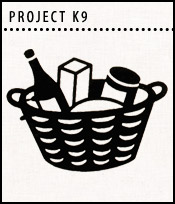
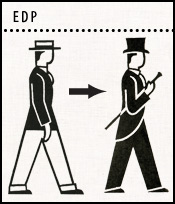
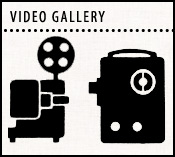
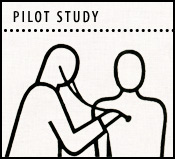
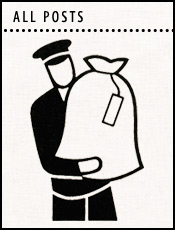
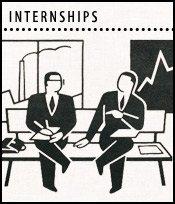




Comments
I must admit I always admire the food porn quotient of these posts, if you’ll excuse my semantics. Yum city.
What a great train ride experience! Water filter businessmen and meeting 10-year-old Indian children by phone on a moving vehicle.
@ Mark/Dad
That it was!
[…] of toothbrushes, and went to work on our derailleurs, cleaning large clods of the red dust of Tamil Nadu, whetted with Indian typewriter oil, from the inner workings of the […]